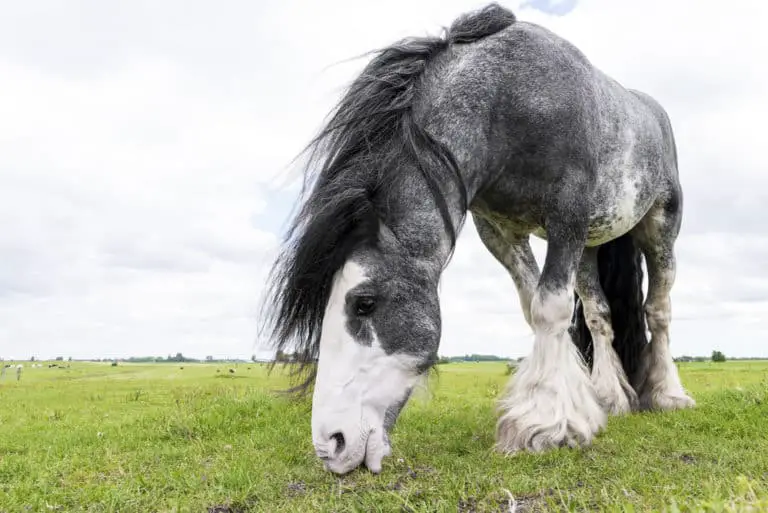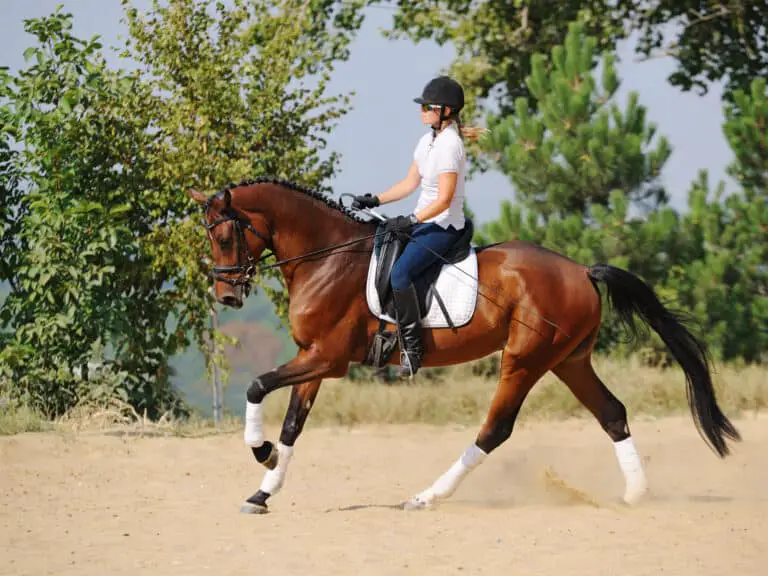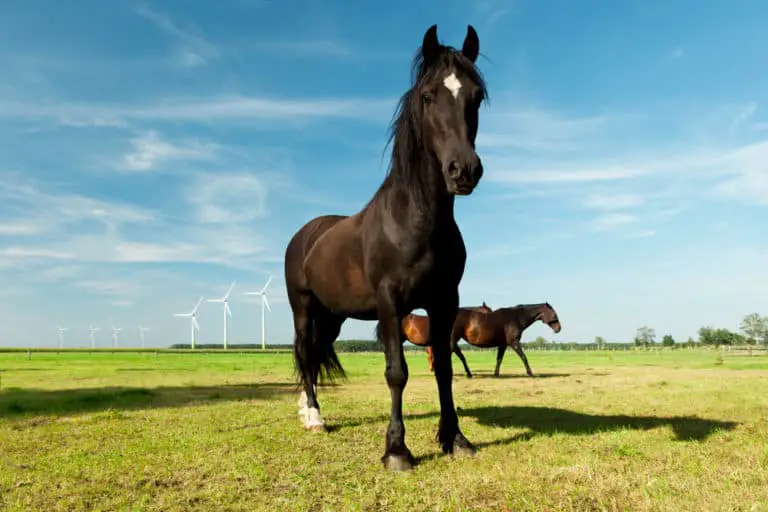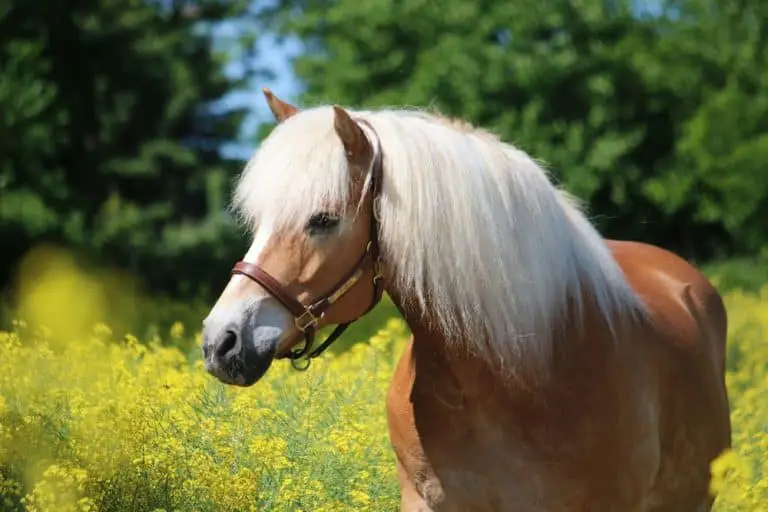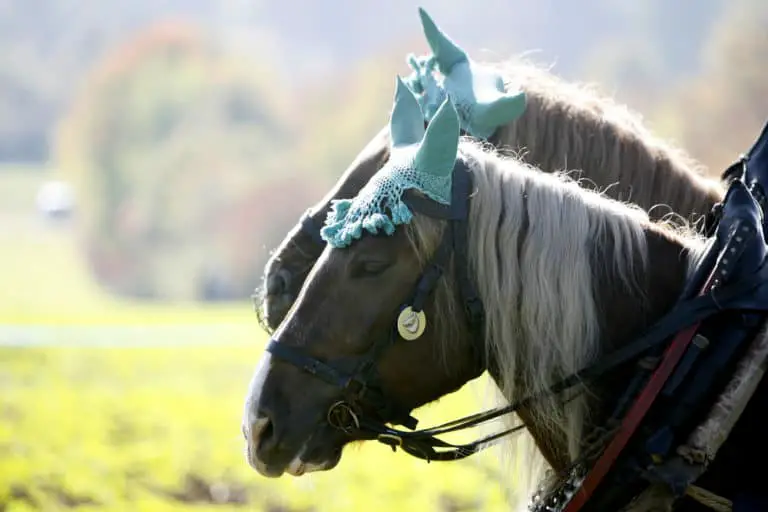Oldenburg Horse: Care, Cost & History (2025)
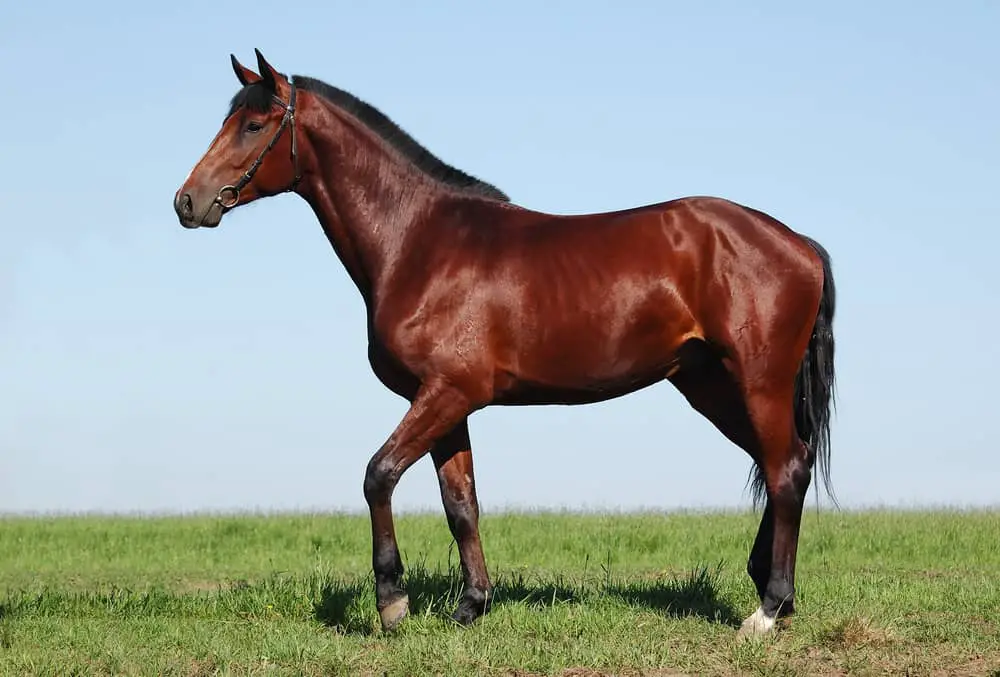
The Oldenburg horse is one of Lower Saxony´s prestigious horse breeds. The elegant and sporty Sports Horse is famous as one of the most distinguished equine breeds originating from the horse (and beer-enthusiastic) country of Germany.
They are perfectly suitable for jumping, dressage, and tournaments and the accomplishments of this breed have made them the epitome of excellence and achievement in the equestrian community.
Breed: Oldenburg Horse
Adult Weight: approximately 1433 lbs
Adult Height: 15.7 –16.7 hands (62 – 67 inches, 160–170 cm)
Origin: Oldenburg in Lower-Saxony, Germany
Use: Dressage, Show, Jumping, Pleasure
Colors: All colors
Features: Large-scale, well-proportioned, elegant build
Lifespan: up to 30 years
Character: disciplined, eager to learn, willingfull, kind & calm
Gait: Tactful, smooth, excellence
Best for: All levels of riders
- Characteristics
- Oldenburg Horse Care
- Oldenburg Horse History
- Modern Oldenburgs
- Cost and Ownership
- Buying an Oldenburg
- Similar Breeds
Oldenburg Horse Characteristics
Oldenburg horse characteristics are distinguished by excellent performance and elegance. An Oldenburger is hard-working and smart and they love to engage socially with their rider, which contributes to this breeds professional success in the equine community. The Oldenburger Breeding Association strictly regulates how an Oldenburger Horse should look. (1)
The Oldenburger is well-proportioned with the acknowledged coat colors of bay, black, brown, and grey. Their build is tall, and robust and they have strong jumping abilities. The Oldenburg horse head is expressive and has a classic proportion, a long neck, and they show a slightly sloped pelvis. (1)
Size
The breed standard for the official Oldenburg horse height lists the designated height to be between 15.7 –16.7 hands (62–67 inches, 160–170 cm) at three years of age (1).
Of course, older horses vary in size and can grow taller, but if a horse is too small, they are at risk of not being acknowledged by the breeding society.
Oldenburgers are suitable for riders of all heights due to their size, which is convenient for many riders participating in dressage and jumping competitions (1).
The Oldenburg size can be considered tall when comparing them with other adult horse breeds and the Breeding association describes one of their main traits to be their large-scale (1).
Weight
The Oldenburg horse weight is not regulated by the breeding societies, but as a light horse breed and large warmblood, their weight is similar to that of similar breeds and will be around 1,433 lbs or 650 kg.
The breeding society designates the horses to be visibly strong and muscular with visible veins. Oldenburgers are sporty built. (1)
Comparing them with other light horse breeds, their weight can be categorized as heavy due to their tall height and the weight of their muscles.
Still, the Oldenburger Horse would not be considered a heavy horse like, for example, a Draft horse like a Clydesdale. They are considerably lighter than draft horses that can weigh up to 2,000 lbs. (12)
Colors
The recognized Oldenburger horse colors are unlimited since the German breeding society accepts all colors. This is rather unlikely since many Warmblood studbooks strictly regulate the colors.
Most common for the Oldenburger are the colors grey, brown, black, and bay. Chestnut and pinto can also be seen, but less frequently than the other colors listed. (1)
Rare Oldenburger horse colors like palomino or cremello will be accepted by the “Verband der Züchter des Oldenburger Pferdes” as well.
If a beautiful Oldenburger horse gets acknowledged and registered with the breeding society the owner can decide if he wants his foal to receive a brand on its left back thigh as a sign of registry with the distinguished society of the German top-line breed.
Temperament
Oldenburg horse temperament is one of their best traits since they are smart, hard-working, and social equines. Oldenburg horse behavior is a perfect composition of eagerness, willingness to perform and learn, and social kindness. They have the ability to perform at the highest levels of international competitions with many people watching and cheering them without spooking or getting frightened. (1)
The Oldenburger has been bred for hundreds of years by the Germans with the goal to achieve more accomplished horses with every single sire. The Oldenburger breed is known to be one of the top lines of Germany for performance and sports.
Oldenburg Horse Care
The Oldenburg horse lifespan can be up to 30 years which is a great age for a horse. To achieve this wonderful life expectancy for your Oldenburg horse, you must care for it frequently and extensively without any exceptions.
There is a lot of care and time involved when it comes to caring for horses. Any rider must create a habit of grooming and caring for their horses.
Competitive riders should accelerate the care even further since sports horses need more care than Oldenburg horses that are used for pleasure only.
Diet and Nutrition
The Oldenburg diet is susceptible to their use. Performance horses usually need more supplements and grain to be able to burn all that needed energy they need to participate in competitions and the training beforehand.
Still, they do not eat considerably more than the average sports horse and even less than cold blood. (3)
The Oldenburg warmblood needs a diet to meet that of warmblood breeds which mainly consist of a variety of forage and fresh hay. You should add some high-quality grain feed, fruit, and vegetables as well to offer your horse a variety of nutrients. (3)
Regardless of how you use your Oldenburg gelding, it must be fed accordingly to the warmblood diet. Even if you don’t use your Oldenburg for dressage or show jumping, you should adhere to their recommended diet.
Health Problems
Oldenburg Horses are very healthy horses with a low incidence of genetic problems. This is astonishing since they are one of the most inbreed breeds with low genetic variation.
The breeding association in Germany won’t accept an ill Oldenburger stallion or horses with genetic diseases to achieve their strict breeding goals. The German breeders want to make sure that no health problems or genetic diseases can be passed along among the registered horses in their breeding association. (1)
One genetic disease which is known to occur frequently in warmbloods is the Fragile Foal Syndrome (WFFS) which results in the birth of non-viable or stillborn foals with abnormally fragile skin (4).
Grooming
Oldenburg grooming is not very different from grooming any horse in general and, therefore, will be pretty time-demanding. There are numerous jokes about equestrians having no free time and that is for a good reason. Owning a horse will take up most of your free time. (13)
Competing with your Oldenburger in jumping or dressage will accelerate the time for grooming further since you must make sure to avoid diseases of the skin, hooves, and eyes. Health problems are not only uncomfortable for your horse but could make you miss an important tournament.
Brush the coat of your Oldenburger Horse every single day with a body brush to clean it from small particles.
The brushing of the coat also strengthens your relationship since this is an imitation of natural horse behavior. Wash the coat of your horse once or twice a week. Use a Curry Comb to remove graver dirt or grease from the skin.
Oldenburg Horse History
Oldenburg horse history is rich, well-documented, and was mainly influenced by the Duke of Anton Günther of Oldenburg. The history of the Northern-German horse starts in the 16th century in the kingdom of Oldenburg. (2)
It was back then when the Duke began to breed elegant horses by siring Friesian Horses, and stallions from Italy and Spain. The breeding association of the Oldenburger Horse was founded in 1923.
Origin
The Oldenburg horse origin is easy to trace back and gives us the very first clue with their name. The breed itself is named after the German kingdom of Oldenburg where the elegant horses originate from. Oldenburg lies in Lower Saxony which is located in North Germany. (2)
The German Duke Anton Günther of Oldenburg was a known horse enthusiast and began to breed with warmbloods from Italy, Spain, and the popular Friesian Horses to achieve a great carriage horse.
The first stallion approval happened in 1820 and the first registry was documented in 1861. The first breeding association was founded later by the fusion of the very first two breeders in 1923 and this association is still the main registry for Oldenburgers until this day. (2)
Historic Development
Unlike many other horses during the 16th until the 18th century, the Oldenburger horse breed has not been used for wars.
Their main breeding goal was to become grand carriage horses for Anton Günther von Oldenburg which luckily prevented them from being used as artillery carrying horses during the World War. (2)
When the Duke of Oldenburg successfully formed the grand and elegant Oldenburger horses, modern breeding societies paid the tradition forward and refined the modern Oldenburger to our nowadays accomplished elite-sports horse.
Most of the modern Oldenburger Horses are still bred and trained in Lower Saxony and sold internationally when they are rising into the hall of famous horses.
Notable Oldenburg Horses
Since Oldenburger Horses are world-renowned for their excellent performance in dressage and show jumping competitions, there are numerous notable Oldenburger horses to know about.
Many famous Oldenburg horses come from a prestige horse pedigree and rose to fame due to their outstanding performances. Others have been the horse of historic persons like kings or the Duke of Oldenburg himself.
Donnerhall
Donnerhall was not only known to be a successful dressage stallion and an influential sire, but he also has his very own bronze statue and a Wikipedia page. That’s how famous he is. Donnerhall was foaled in 1981 and dies in 2002. He stood at 16.3 hands and won numerous international dressage competitions.
Gestion Bonfire
Gestion Bonfire is another famous dressage horse that competed in two World Equestrian Games, and three Olympic Games, and won numerous international and national competitions. Bonfire has a statue in his hometown Erp and has been told to have an unmatched talent. He was known to be hot-tempered at times, but he became calmer with age.
Sandro Hit
Sandro Hit was a successful and accomplished Oldenburger stallion from Germany. At 6 years of age, Sandro became the dressage World Champion. Sandro won the title of Best Young Stallion in the year 2000 as well and has accomplished various achievements throughout his dressage career. He has a black coat and was one of the most beautiful Oldenburger Horses to this day.
Myths and Legends
Seeing that Oldenburger Horses are around for many centuries now, there are some Oldenburg horse legends that one should know of. Their godly looks and huge talent turned those magnificent horses into myths and some even were conserved forever. Kings, Dukes, and even the commoners couldn’t resist the stunning creatures and many legends surrounding the breed.
Streiff
If you calculate the inflation out, Streiff might have been the most expensive horse in history. Streiff was a brown stallion who lived in the 17th century and he was purchased by King Gustav Adolf of Sweden.
At this time the price of a nice horse was around 70 to 80 Reichstaler, but Streiff captured the Swedish kings’ desires and the king paid 1000 Reichstaler for the Oldenburger. He carried the king into the war, both of them were shot and Streiff’s coat was preserved and put onto a wooden horse to “conserve” the majestic horse for all time.
One Horse, Two Breeds
People interested in Oldenburger Horses might be confused when looking into the breed because what has been one breed and breeding association from 1921 until 2001, was then parted into two different breeds due to human difficulties that occurred between the two breeding associations. That’s why nowadays there are the Oldenburger Horses and the Oldenburger Jumping Horses. The difference? Mostly the name.
Horse of the Millenium
Donnerhall, the prestigious Oldenburger Horse with his own bronze statue was not only a notable horse of our modern days, but he also became a legend for eternity. Donnerhall was even named “Horse of the Millenium” due to his unique talent and accomplishments. We can be sure that even many hundred years from now on, people will remember Donnerhall.
Modern Oldenburg Horses
The modern Oldenburg Horse is considered a top-line breed in the dressage and horse sport community. They are amongst the most famous horses in Europe for dressage and show jumping. They are used worldwide for competitions and have an excellent reputation.
The different types of Oldenburg horses are suited for beginners, children, professionals, and all horse enthusiasts.
Breeding
Oldenburg breeding is still prevalent in Lower Saxony, Germany, the origin of Oldenburger Horses. (1)
Seeing that they are one of the best sport horse breeds worldwide for many decades, the Oldenburger has been exported since its formation, in the 17th century, to many countries due to its excellent capabilities.
They are a beloved horse breed for many riders worldwide. The United States, the UK, and the Netherlands have many registered Oldenburger Horses since riding is prominent in those countries and competition is fierce.
Oldenburg horses breeding still focuses on their use for dressage and showjumping. Their large-scale, muscular, and well-defined bodies and dressage abilities are still the most crucial breeding goals (1).
Population
When it comes to the Oldenburg horse population worldwide, the records and scale of the numbers do not necessarily indicate how vital this horse breed is for competitions, rather than how selective and strict the breeding association is in their approval of stallions and mares.
The numbers of registered mares and stallions are documented in the associations breeding books. As of 2018, there were only around 7000 mares accepted and registered for siring and 310 stallions (6).
The population of Oldenburgers is not as high as for other light horse breeds like the American Quarter Horse, but this is due to the rigorous breeding standards that are applied by the breeding association.
The horses’ ability to jump and perform in dressage is one of the key aspects to be registered with the studbook, whereas not every horse that would qualify from the looks, can actually qualify (1).
Unfortunately, there is no current verified number of the Oldenburger Horse population in the United States.
Uses
The Oldenburg horse uses are versatile, well-defined, and definitely one of their best characteristics.
Since the Oldenburg horse gait is renowned to be extraordinarily refined, elegant, smooth, and tactful, dressage is their specialty. Furthermore, the breeding line of the Oldenburger jumping horse has accelerated in show jumping. (1)
Still, numerous people appreciate this breed for its kind and calm character and use them for pleasure only.
The Oldenburger Horse is well-acclaimed in any professional equine discipline. It must be noted that, if not directly sired from a Thoroughbred, they are not too suitable for eventing, since they are often not fast enough then.
Oldenburg Horse Prices
Prominence and achievements, or even quality as one might argue, come with a price when it comes to buying an Oldenburger horse. Despite the initial Oldenburg horse price, the upkeeping costs like boarding, feed, and vet care can be hefty. Owning an Oldenburger horse will even be more expensive if you professionally participate in equine competitions.
Purchase Price
Since the Oldenburger Horse is an excellent and acclaimed horse breed, this makes them initially expensive. If you find a very cheap Oldenburger somewhere, be aware that some sellers will advertise their horses as Oldenburgers even if they are not officially registered (7).
One main aspect of the breed is their dressage and jumping abilities, which won’t evolve unless there has been some significant Oldenburg horse training and makes the registry not possible for any horse that might look like an Oldenburger but doesn’t perform like one (1).
As with any horse breed, the pedigree, health status, received training, and physical data determine the price of an Oldenburg horse (7).
The cost of an Oldenburger with a history of professional dressage and a registry in the studbook usually does not start below $12,000 and can easily cost up to $55,000 -$110,000 (7).
Ownership Costs
It is essential that you are aware of the Oldenburg horse cost of ownership that comes with owning your precious performer. And those costs are aside from the Oldenburg price.
The monthly costs of ownership should be taken into consideration: feed, board, veterinarian care, as well as hoof care are just some of the regular prices, which can easily be as high as $1,000 a month or $12,000 a year.
Board
The Oldenburg horse board cost will approximately be $150-300 each month. If you pay for full board, which includes regular vet care, hoof care, feed, and exercising or training your horse, the monthly boarding cost will be considerably higher, around $400 each month, than just paying for a stable, which can cost as little as $150. (8)
Feed
Oldenburg horse feed cost includes the costs for high-quality hay even when your Oldenburger horse can forage through the good pasture. A bay of hale can cost around 2$-$4. Horses need around 15-30 bales per month (10).
Chances are high your Oldenburger is active in dressage or showjumping, which means that it will burn through more energy, whereas you have to add some premium grain feed which is around $16 for a bag that lasts about 1-2 weeks.
Veterinary Care
The Oldenburg horse veterinary cost varies for every individual, but will grossly be around $300-$500 a year if nothing out of the ordinary occurs. These costs cover annual vaccinations, deworming for 12 months, and teeth floating once or twice per year. (11)
The estimate does not include anything unexpected like injuries, inflammations, or colics. Unexpected health issues, even just a single one of the ones listed, can cost up to $1,000. Every horse owner should have considerable savings to prepare for the unexpected.
Hoof Care
The Oldenburg horse hoof care cost is a regular expense since you need to regularly shoe or trim your horses’ hooves.
Trimming your horses’ hooves will cost around $40 for a trim. Full-Shoeing your horse will cost you more than twice as much – approximately $150 for a full set of shoes (11).
This brings the annual costs to anything from $150 to over $1,000, depending on your Oldenburgers’ hoof care.
Buying an Oldenburg Horse
If you have decided to buy a specimen of the Oldenburg breed, you know that you will need a lot of money, patience, and time for your sporty horse.
Make sure to meet your Oldenburger before purchasing, as the horse’s temperament should match your needs and your own energy level. Your Oldenburg foal or adult horse should always come with documentation and health certificates.
Is the Oldenburg Horse Right for You?
Riding an Oldenburg horse is a privilege and the goal of many competitive riders. If you are a professional rider or if you are wishing to become one, owning an Oldenburg horse is a brilliant choice.
You are just looking for a horse to ride for pleasure? Still, an Oldenburger might be a great choice for you. It must be said that young or mid-aged Oldenburgers are often high-energy horses and if you are not looking to ride or exercise them frequently, this might not be the healthiest choice for the horse. A retired Oldenburger might be a perfect choice then.
How to Buy an Oldenburg Horse?
You are buying an Oldenburger horse and you are not sure what to look out for?
First, you will need to look for a renowned and recommended Oldenburger breeder who is officially registered with the breeding association in Northern Germany. Then, visit the breeder to get an idea of how the Oldenburgers are brought up and kept.
Look out for cleanliness in the stables, how many horses there are in the equestrian center, and how the horses react to their current owner.
Does the horse seem relaxed and calm, or distressed?
You should interact with the Oldenburger of your interest, ride it and talk with the breeder about the traits and characteristics of the horse to make sure you are a good fit for each other.
Similar Breeds to Oldenburg
Similar breeds to Oldenburger Horses share some of their excellent features like their physical capabilities, their muscular build, and their outer appearance. Oldenburger breed alternatives are the Hanoverian Horse, the Irish Sport Horse, and the Thoroughbred.
Some of those breeds are more affordable when it comes to the initial purchase price or they are faster and therefore more suitable for eventing.
Hanoverian Horse
The Hanoverian horse is another excellent and distinguished horse breed from Germany. A Hanoverian loves to learn and engage with his rider. They are well-proportioned and have a build that is elegant, robust, and with strong limbs. The Hanoverian horse head is characterized by its classic proportions and its kind character.
Irish Sports Horse
The Irish Sport Horse is a more affordable breed alternative to the expensive Oldenburger Horse. It is more realistic for many riders to purchase a well-accomplished Irish Sports Horse than a well-accomplished Oldenburger horse which can have the price of a small house. Especially in the UK, Scotland, and Ireland the Irish Sports Horse is a great alternative to the expensive German horse breed. Irish Sport Horses are suitable for dressage and jumping as well.
Thoroughbred
A Thoroughbred is a similar breed to the Oldenburger Horse since they are often sired with one another and therefore share a lot of characteristics. Thoroughbreds look quite similar to Oldenburgers but are slightly more spirited when it comes to their character. Thoroughbreds can be a little more hot-temperament than the kind Oldenburger. Furthermore, they are faster than an Oldenburger and therefore very suitable for eventing.
FAQ
What is an Oldenburg horse?
The Oldenburg horse is an equine originating from Lower-Saxony in Germany. The horse is known to be one of the top-line horse breeds worldwide and is famous for its excellent performances in jumping, dressage, and elegance.
What does an Oldenburg horse look like?
Oldenburg Horses are classic, well-proportioned, and very elegant light horses. They have visible muscles, veins, and tall limbs.
How did the Oldenburg horse get its name?
The Duke of Oldenburg founded and bred the Oldenburg Horses which is why they were named after his kingdom.
Can you ride an Oldenburg horse?
Yes, you can ride an Oldenburg Horse. The breed is known to be one of the most disciplined and kind breeds, which makes them perfect for all-level riders.
Are Oldenburg horses good for beginners?
Oldenburg Horses are good for all-level riders. Their kind spirit, calm minds, and smartness make them suitable for beginners and novices as well.
How tall is an Oldenburg horse?
The Oldenburg stands at 15.7 –16.7 hands (62 – 67 inches, 160–170 cm). The Oldenburger is a light horse breed, and they are warmbloods.
How much does an Oldenburg horse weigh?
An Oldenburg horse weighs approximately 1433 lbs which is 650kg. Due to their many muscles, they are not as light as one might expect when looking at them.
How big is an Oldenburg horse?
Oldenburg Horses are popular for their large scale. They have tall limbs but are well-defined and look very sporty.
How much does an Oldenburg horse cost?
Oldenburg Horses can be super expensive due to the strict breeding regulations and their accomplishments worldwide. Usually, you won’t be able to buy a registered Oldenburg for under $10,000.
How much does an Oldenburg horse ownership cost?
Owning an Oldenburg horse can easily cost you up to $1,000 each month and $12,000 a year. The costs depend on your boarding and are also considerably determined by the state you live in. The average cost is around $300 each month.
How long do Oldenburg horses live?
Oldenburg Horses can live up to 30 years which is a very nice age for horses. You must care properly for them to achieve such a wonderful life expectancy for your horse.
How fast can an Oldenburg horse run?
Oldenburg horses are not as fast as a Thoroughbred, but they can run quite fast with 30 – 35 mph
How much can an Oldenburg horse pull?
Oldenburg horses are usually not used for pulling, but a horse can pull around 1/10 of its weight.
How much can an Oldenburg horse carry?
An Oldenburg horse can carry approximately 15% of its weight. They can carry a healthy-weighted rider easily on their back.
At what age is an Oldenburg horse full grown?
An Oldenburger will reach up to 90% of their final height by the age of 12-14 months. The growth slows down after that rapid growth period and takes another 3-4 years until the full growth has been achieved. Keep this in mind when riding your horse.
What are Oldenburg horses used for?
Oldenburg Horses are popular for dressage, showjumping, and pleasure. They are one of the most distinguished breeds in dressage.
References
- Oldenburg Horse Breeding Association. 2022. The Oldenburg horse breed. Link
- Oldenburg Horse Breeding Association. 2022. Organization. Link
- Sarah L. Ralston, VMD, PhD, DACVN, Department of Animal Sciences, School of Environmental and Biological Sciences, Rutgers University. 2021. Nutritional Requirements of Horses and Other Equids. Link
- Áine Rowe, Sharon Flanagan, Gerald Barry, Lisa M. Katz, Elizabeth A. Lane, Vivienne Duggan. 2021. Warmblood fragile foal syndrome causative single nucleotide polymorphism frequency in horses in Ireland. Link
- International Museum of The Horse. 2022. Oldenburg. Link
- Oldenburg Horse Breeding Association. 2018. Breeding Programme for Oldenburg Horses. Link
- Ehorses. 2022. Oldenburg – horses for sale. Link
- Best in the West Gaited Horses. 2022. Horse Boarding Details. Link
- Equine Guelph. 2022. Annual Horse Expense Sheet. Link
- Kentucky Equine Research. 2011. Feeding Warmblood Horses. Link
- Equine Guelph. 2022. Annual Horse Expense Sheet. Link
- Britannica. 2022. Clydesdale. Link
- United States Equestrian Federation. 2017. Basic Horse Grooming. Link

